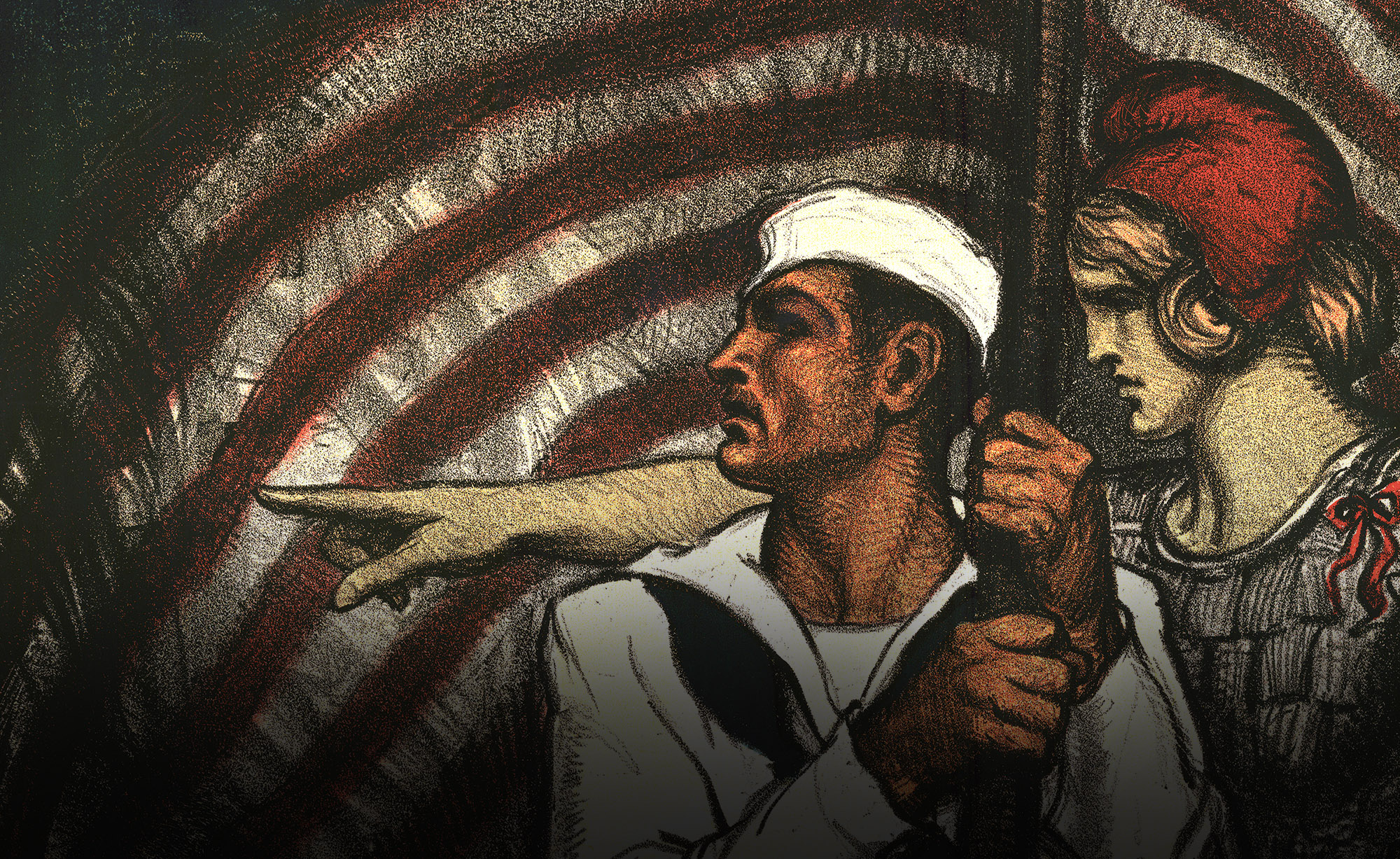| u0003_0004200_0000004 |
| Title | Oh Boy That’s the Girl |
| Creator | George M. Richards |
| Date | 1918 |
| Format | 30 x 40 in |
| Description | George Richard’s “Oh Boy! that’s the Girl” is a poster that reflects a seismic shift in gender relations taking place during WWI, a conflict in which women became increasingly active in jobs and activities traditionally reserved for men. The image foregrounds a soldier holding a donut and gesturing approvingly backwards toward a tall, slender woman holding a tray before a sweeping landscape. The Salvation Army grew in popularity during this time period in part due to its reputation for comforting soldiers overseas with freshly baked donuts; and this poster implores audiences to donate money in order to “Keep Her on the Job.” The bold and emphatic text, “Oh, Boy! that’s the Girl!” captures the soldier’s excitement mirrored in his face, and the placement of the text to the right of the woman stands out against the dark blue skyline. The woman’s role as an “Army Lassie” is certainly defined in traditional feminine terms of hospitality and servitude to men, but this framing should not obscure the rather radical nature of her participation. Unlike so many women in World War I posters, this woman is not a mere sex symbol, helpless damsel, or spouse anxiously awaiting her lover’s return. Instead, she is depicted as a patriotic American bravely working in a war zone alongside men. The androgynous dress and physical features shared by the two figures suggests that women are not as dissimilar to men as commonly believed. However, despite a considerable amount of gender ambiguity, the poster ultimately argues that it is up to the viewer to keep men satisfied by supporting the United War Work Campaign. |
| Copyright and Terms | Images are in the public domain or protected under U.S. copyright law (Title 17, U.S. Code), and both types may be used for research and private study. For publication, commercial use, or reproduction, in print or digital format, of all images and/or the accompanying data, users are required to secure prior written permission from the copyright holder and from archives@ua.edu. When permission is granted, please credit the images as Courtesy of The University of Alabama Libraries Special Collections. |

